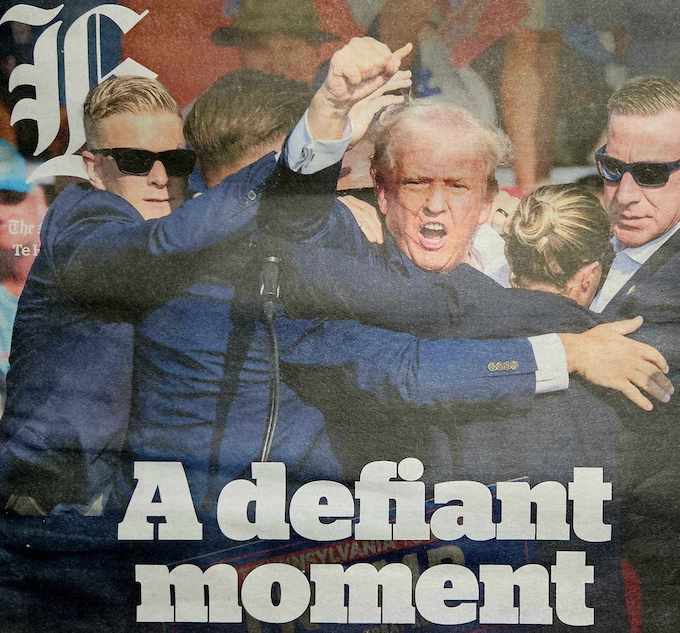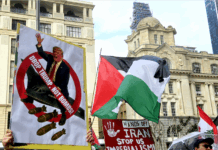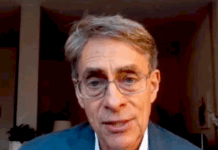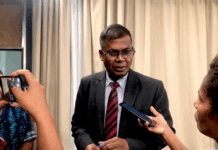
ANALYSIS: By Sara Oscar, University of Technology Sydney
The attempted assassination of Donald Trump at a rally in Pennsylvania was captured by several photographers who were standing at the stage before the shooting commenced.
The most widely circulated photograph of this event was taken by Evan Vucci, a Pulitzer Prize winning war photographer known for his coverage of protests following George Floyd’s murder.
A number of World Press Photograph awards have been given to photographers who have covered an assassination.
- READ MORE: The Trump assassination attempt has upended the US election race. How will both parties react now?
- Attempted assassination of Trump: The long history of violence against US presidents
- Other Donald Trump articles
In this vein, Vucci’s image can also be regarded as already iconic, a photograph that perhaps too will win awards for its content, use of colour and framing — and will become an important piece of how we remember this moment in history.
This incredible and dramatic photo by photographer Evan Vucci will be the next ‘World Press Photo of the Year’ and it will for sure be in history books.#trump #Pennsylvania #Butler #DonaldTrump #shooting #journalism #photography #photojournalism #EvanVucci #US #history pic.twitter.com/EaxDsqESmb
— Alessandro Di Maio (@alexdimaio) July 14, 2024
Social media analysis of the image
Viewers of Vucci’s photograph have taken to social media to break down the composition of the image, including how iconic motifs such as the American flag and Trump’s raised fist are brought together in the frame according to laws of photographic composition, such as the rule of thirds.
Such elements are believed to contribute to the photograph’s potency.
To understand exactly what it is that makes this such a powerful image, there are several elements we can parse.
Compositional acuity
In this photograph, Vucci is looking up with his camera. He makes Trump appear elevated as the central figure surrounded by suited Secret Service agents who shield his body. The agents form a triangular composition that places Trump at the vertex, slightly to the left of a raised American flag in the sky.
On the immediate right of Trump, an agent looks directly at Vucci’s lens with eyes concealed by dark glasses. The agent draws us into the image, he looks back at us, he sees the photographer and therefore, he seems to see us: he mirrors our gaze at the photograph.
This figure is central, he leads our gaze to Trump’s raised fist.
Another point of note is that there are strong colour elements in this image that deceptively serve to pull it together as a photograph.
Set against a blue sky, everything else in the image is red, white and navy blue. The trickles of blood falling down Trump’s face are echoed in the red stripes of the American flag which aligns with the republican red of the podium in the lower left quadrant of the image.
We might not see these elements initially, but they demonstrate how certain photographic conventions contribute to Vucci’s own ways of seeing and composing that align with photojournalism as a discipline.
A photographic way of seeing
In interviews, Vucci has referred to the importance of retaining a sense of photographic composure in being able to attain “the shot”, of being sure to cover the situation from numerous angles, including capturing the scene with the right composition and light.
For Vucci, all of this was about “doing the job” of the photographer.
Vucci’s statements are consistent with what most photographers would regard as a photographic way of seeing. This means being attuned to the way composition, light, timing and subject matter come together in the frame in perfect unity when photographing: it means getting the “right” shot.
For Susan Sontag, this photographic way of seeing also corresponded to the relationship between shooting and photographing, a relationship she saw as analogous.
Photography and guns are arguably weapons, with photography and photographic ways of seeing and representing the world able to be weaponised to change public perception.
Writing history with photographs
As a photographic way of seeing, there are familiar resonances in Vucci’s photograph to other iconic images of American history.
Raising the Flag on Iwo Jima
Taken by Joe Rosenthal, it won the 1945 Pulitzer Prize for Photography and has come to be regarded in the United States as one of the most recognizable images of World War II. https://t.co/Nv5HjF6XMq pic.twitter.com/AGxmQqonM6
— CHRISTINA VONIATIS (@VoniatisC) July 14, 2024
Take for instance, the photograph taken by Joe Rosenthal, The Raising of the Flag on Iwo Jima (1945) during the Pacific War. In the photograph, four marines are clustered together to raise and plant the American flag, their bodies form a pyramid structure in the lower central half of the frame.
This photograph is also represented as a war monument in Virginia for marines who have served America.
The visual echoes between the Rosenthal and Vucci images are strong. They also demonstrate how photographic ways of seeing stretch beyond the compositional. It leads to another photographic way of seeing, which means viewing the world and the events that take place in it as photographs, or constructing history as though it were a photograph.
Fictions and post-truth
The inherent paradox within “photographic seeing” is that no single person can be in all places at once, nor predict what is going to happen before reality can be transcribed as a photograph.
In Vucci’s photograph, we are given the illusion that this photograph captures “the moment” or “a shot”. Yet it doesn’t capture the moment of the shooting, but its immediate aftermath. The photograph captures Trump’s media acuity and swift, responsive performance to the attempted assassination, standing to rise with his fist in the air.
In a post-truth world, there has been a pervasive concern about knowing the truth. While that extends beyond photographic representation, photography and visual representation play a considerable part.
Whether this image will further contribute to the mythology of Donald Trump, and his potential reelection, is yet to be seen.
![]()
Sara Oscar, senior lecturer in visual communication, School of Design, University of Technology Sydney. This article is republished from The Conversation under a Creative Commons licence. Read the original article.













































